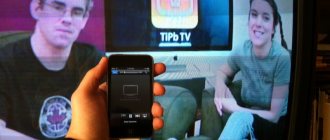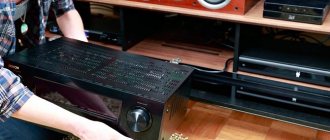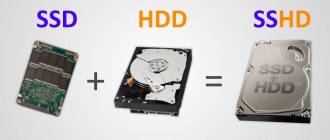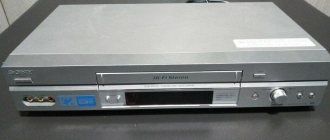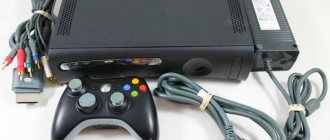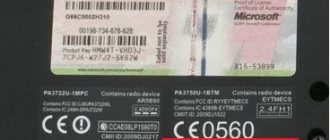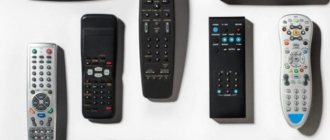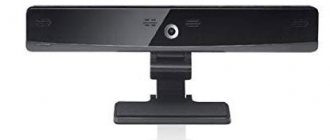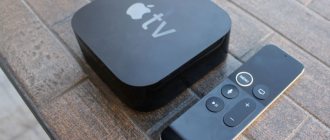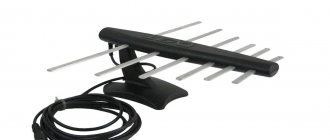How to properly format a flash drive for a TV. Flash drive format
Formatting a flash drive becomes an urgent need in cases where the TV does not initially see it. But it happens that the USB device first opened and then lost visibility. But in the absence of an Internet connection or built-in memory on a smart TV, this device allows you to watch TV without restrictions in choosing a movie, animation or music.
Usually, different models open the flash drive almost instantly after connecting it, but it happens that individual files from its contents are not played. Most often, this indicates that the player on a particular TV does not accept a certain recording format. But there are other cases.
The first thing to do in such a situation is to test the device. For this:
- Connect it to your PC. If the flash drive opens, the problem is with the TV.
- If there are multiple ports, try connecting the drive to a different connector.
- If the connector is labeled Remote Control or Service, this is a so-called “service” input, which is used only in a service center for repair or diagnostics. There is no point in connecting a flash drive to it.
- Alternatively, try connecting another device to evaluate the functionality of the TV.
- To eliminate the possibility of your TV freezing, unplug it for 5 minutes, and then try connecting the flash drive again.
If the suggested tips do not work, you will have to format the USB device. First we need to decide what format we need. The most popular today are FAT32 and NTFS. The exFAT format is less popular.
The essence of the procedure is to find out what type of flash drive you have and change the format to another until you find one that is readable by the purchased TV.
To determine the format, connect the device to the PC and go to My Computer. Right-click to open the context menu of the drive and select the “Properties” menu.
In the menu that opens, look at the File System, which is what designates the format.
After this, close the window and begin formatting.
To do this you should:
- Right-click to open the USB device menu again.
- Select "Format".
- In the presented list of formats, select one that is different from what is already installed by default.
- Click the “Start” button.
- After studying the warning that appears, click “Ok”.
Having completed formatting, we again load the desired content onto the flash drive and insert it into the TV. If it doesn’t help, we repeat the procedure, changing the format to something that has not yet been tested.
Other connection methods
How to connect a flash drive to a TV that does not have a connector. Usually these are older models, where the function of viewing video from external devices is not yet provided. That’s why many people are interested in how to connect a flash drive to an old TV. This can be done using a DVD and TV tuner, ANDROID set-top box.
Method 1
All video players are equipped with connectors for flash drives. Therefore, using a player connected to the TV, you can view information from the drive.
To do this, you need to install a flash drive in the player, turn on all devices, select the desired movie from the menu and start watching.
Method 2
You can start the USB drive using a set-top box for watching digital television. Such receivers are equipped with all the necessary connectors, including USB. The device must be connected via HDMI, but if the TV is very old, then you need to use CRT inputs (tulips).
After connecting all devices, insert the USB flash drive, select the desired video to watch in the MENU tab, and press the PLAY button.
Method 3
Viewing from the media is carried out using an ANDROID set-top box. The device is equipped with the same connectors as the digital tuner, so the connection follows a similar scheme. There are different models on the market, you can choose a set-top box at a fairly economical cost.
All methods are also suitable for all well-known TV brands LG, Samsung, Sony.
What video format is suitable for TV
Sometimes the format of a flash drive is not to blame for its lack of visibility, and you won’t be able to view the video due to its type. In this case, only content with the "correct" format may be displayed, or an error notification may appear stating that the format is not supported. Also, the video can be displayed without an audio track, because it is its type that is not supported by a specific TV model.
If the TV is obsolete, a tuner capable of decoding the format is used to display video. Modern TVs are capable of decoding information without additional devices. The formats available to them are:
- MPEG – divided into the first generation, necessary for decrypting CDs; MPEG 2nd series, used for DVD decoding and on modern PCs and laptops. The fourth version of the format is current and is actively used. The third version of this protocol quickly lost popularity and ceased to be used, because functioned only with HDTV;
- H264 – this protocol stands for maximum compression of a video stream while maintaining optimal picture quality. The format is based on MPEG 4. It is used in HD DVD and Blu-Ray set-top boxes;
- DivX or Xvid are the latest versions of MPEG 4. Their algorithms are part of the basic versions of modern TV panels, so they help decrypt most videos.
If you don't know what format your TV supports, record MPEG video, because... This protocol is read by almost all modern TVs. But for an accurate “hit”, study the instructions or look for information on the official websites of the manufacturers.
Other popular video formats include:
- WMV(9/VC1);
- MP;
- NTFS;
- AVC;
- FAT (12, 16, 32);
- Asf.
How to connect a USB flash drive to a TV if there is no connector
It is impossible to connect a USB flash drive to some TV models for the simple reason that there is no corresponding connector. In this case, alternative methods will come in handy.
Adapter
This method allows you to connect a flash drive using a special adapter - a wire with an HDMI connector on one end and a USB port on the other. The length of such a cable is short (20 - 30 cm), but it is usually sufficient.
Media or DVD player
Older models of TV panels did not even have a USB port, but they probably had a media player for playing video. This device is connected to the TV using “tulips”, and the flash drive is connected to the connector on the player.
Digital set-top box
The latest models of digital receivers, like Android set-top boxes, are mostly equipped with a port for connecting a flash drive, with the exception of Apple devices. The connection follows the same principle as with a media player.
Laptop or computer
If you don’t have everything listed above, but you have a PC or laptop, you can do without a flash drive at all. But the TV panel needs to be synchronized with them.
For this you will need:
- HDMI cable;
- adapters with HDMI port;
- DVI and adapters for such a port;
- not very popular SCART connector;
- VGA output and adapters for it;
- RCA adapters.
It's even easier to view media content wirelessly. The only thing that is required for this is that both devices support the Miracast function, which offers mirroring of a PC or laptop monitor to the TV.
The most convenient way to view the contents of a smartphone or tablet is on the TV panel. To do this, you need to connect the devices wirelessly and select “Broadcast” and the desired device in the video options. An important point: both the TV panel and the gadget must connect to the same Wi-Fi source.
Instructions
Scheme for connecting the drive to the TV directly:
- Download the desired video or piece of music.
- On the side of the TV you need to find a USB connector (sometimes the connector is on the back panel), insert a flash drive with downloaded content into it.
- Turn on the plasma panel, a menu will appear on the screen displaying all the materials contained on the media.
- The user must select the movie or program of interest to watch from the flash drive on the TV, and press the “play” key.
- After which the content will begin playing.
This is the main method of connecting a flash drive to a TV. Suitable for most modern Samsung and LG models.
Why doesn't the TV see the flash drive?
There are several reasons why your smart TV is ignoring the flash drive. Next, we will consider the most common of them and methods for solving the problem.
Multiple partitions on a flash drive
If the USB device is larger than a certain size, such as 64 GB, or has previously been used to create a bootable drive, sometimes more than one partition is found on it. But the user does not see this, since the partitions may be so small that they are not visible on the PC. The TV panel does not display such a drive. The only solution in this case is formatting.
USB device capacity is too large
Some models have restrictions on the volume of connected external drives. Interestingly, such limits depend on the type of device. Thus, LG brand smart TV supports an external drive with a capacity of 1 TB, but a USB flash drive only supports 32 GB.
On the official websites of other manufacturers, in particular Sony or Samsung, there is also information only about USB HDDs and nothing about regular flash drives. But in fact, problems often arise with detecting the latter. There is only one solution here - use another flash drive.
Connection via additional devices
If the connection is made using a hub (USB splitter) or extension cable, but the device is not visible, try a direct connection. If there are additional devices connected to these accessories, disconnect them if possible.
A USB device makes the possibilities of the TV panel almost unlimited, thanks to the ability to watch your favorite videos. All that remains is to explore the capabilities of the TV so that watching video content using a flash drive is fully accessible.
What problems may arise
- The plasma panel does not see the flash drive - the reasons for this problem may be the following: the device may not turn on due to a breakdown or due to incompatibility of systems. In this case, you need to determine in which file system the device operates; to do this, you need to insert the drive into the computer, open the “Explorer” file, select “Properties” and select the desired device. If the system type is NTFS, then it is formatted to FAT32. And the failure of the drive is determined quickly; if the personal computer does not see it, it means that it has failed.
- The TV initializes the drive, but the files do not - the equipment does not support the format in which the video materials were downloaded. It is recommended that you read the instructions to find out what parameters are needed to view video from the drive. And download material only in the format that the plasma panel supports. There are also many different programs and applications that can be used to convert files into the appropriate type of format.
